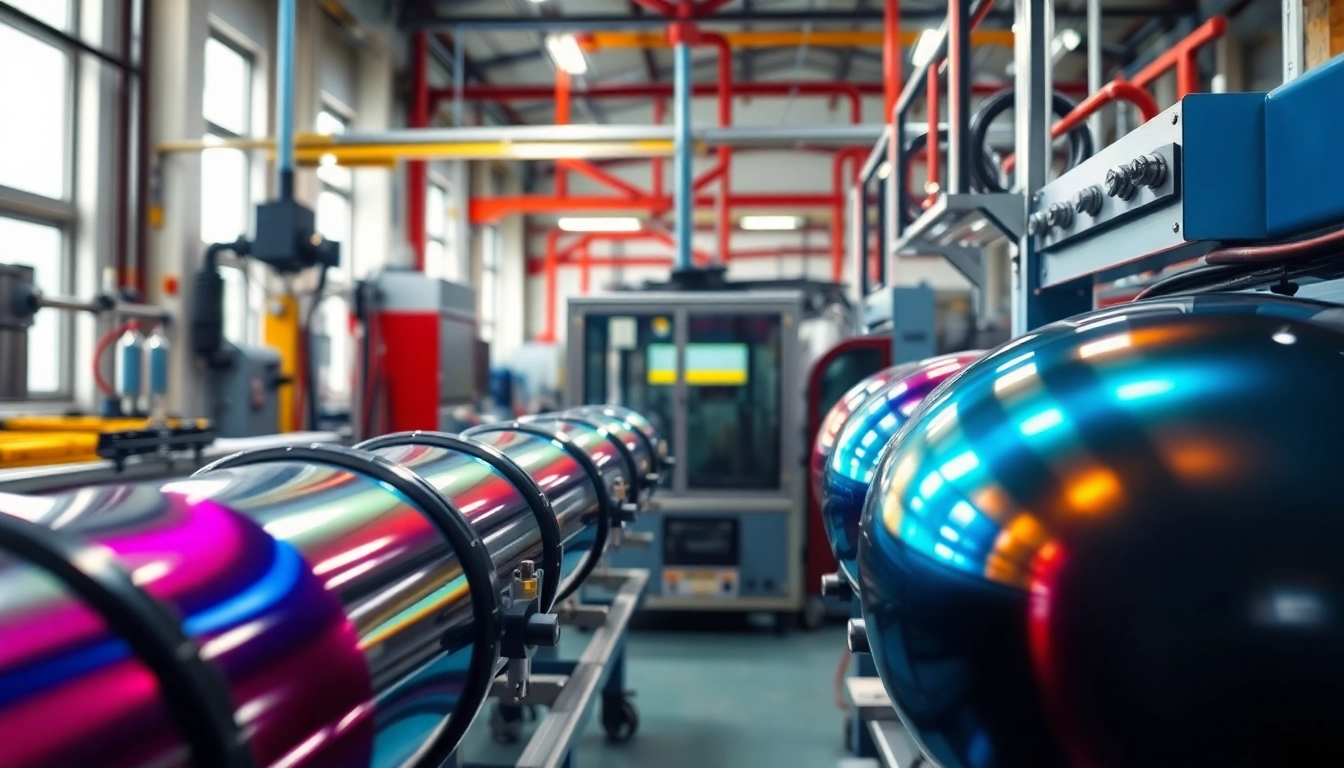Understanding Thermal Management Materials
In our increasingly technological world, the management of heat is crucial for the performance and longevity of electronic devices. This brings focus to the significance of thermal management materials, which are designed to effectively dissipate heat generated by electronic components. These materials enhance the reliability and efficiency of devices ranging from consumer electronics to complex industrial machinery.
What Are Thermal Management Materials?
Thermal management materials (TMM) encompass a variety of substances structured to either dissipate, store, or distribute heat across electronic devices. These materials mitigate overheating and maintain optimal operating temperatures, which are vital for both performance and safety. Thermal management products include:
- Thermal Interface Materials (TIM): These materials include pads, tapes, and greases that fill the microscopic air gaps between heat intensive components and heat sinks, improving thermal conduction.
- Phase Change Materials (PCM): These substances absorb and release thermal energy during phase transitions (e.g., solid to liquid), thus regulating temperature fluctuations.
- Gap Fillers: Used to fill voids between components and heat sinks, optimizing the thermal transfer.
- Insulating Materials: These materials, such as thermal blankets and foams, reduce unwanted heat flow, thus protecting sensitive components.
Types of Thermal Management Materials
Understanding the various types of thermal management materials is essential for selecting the appropriate solution for specific applications:
- Thermal Pastes and Greases: These materials improve thermal transfer between surfaces, filling any gaps and enhancing contact.
- Thermal Pads: Flexible, conductively-coated materials that conform to surfaces and maintain thermal contact.
- Thermal Tapes: Adhesive tapes with high thermal conductivity that easily adhere to components for efficient heat dissipation.
- Silicone-based Solutions: Soft and pliable, these materials provide excellent thermal conductivity and electrical insulation.
- Graphite Heat Spreaders: Lightweight and efficient, used in high-performance applications to spread heat quickly.
Importance in Electronic Applications
As electronic devices become more powerful and compact, efficient thermal management becomes essential. Excess heat can lead to performance degradation and shorter lifespans for components. Effective thermal management materials contribute significantly to:
- Improved Performance: Maintaining optimal temperatures ensures devices operate effectively without thermal throttling.
- Longevity: Reducing heat stress on components increases overall product lifespan, particularly in high-performance electronics.
- Safety: Overheating can pose risks; thus, thermal management is a crucial safety factor in electronics, including consumer devices and automotive systems.
Key Properties and Selection Criteria
When evaluating thermal management materials, several key properties and selection criteria must be considered to ensure optimal performance.
Thermal Conductivity Factors
Thermal conductivity is a primary consideration when selecting thermal management materials. Measured in Watts per meter Kelvin (W/mK), the thermal conductivity of a material indicates its ability to conduct heat. High thermal conductivity materials such as graphite and metal-based TIMs are preferred for high-performance applications. When testing materials:
- Identify the required thermal conductivity based on the application’s heat dissipation demands.
- Evaluate performance under different conditions to ensure stability across varying temperatures.
Environmental Resistance and Durability
Thermal management materials must withstand different environmental factors, including temperature extremes, humidity, and mechanical stress. Selecting materials with:
- Robust Durability: Ensure materials can withstand prolonged exposure to heat and environmental agents without degrading.
- Resistance to Chemical Corrosion: Choose materials that remain stable when exposed to chemicals often found in electronics.
Cost-Effectiveness in Application
While performance is crucial, cost-effectiveness cannot be overlooked. This includes evaluating both initial costs and long-term operational efficiencies. Factors to consider include:
- Initial procurement costs of thermal materials relative to their performance benefits.
- Potential reduction in warranty claims and maintenance costs through improved durability and performance.
Applications of Thermal Management Materials
Thermal management materials find applications across various industries, each demanding specific characteristics from the materials used.
Consumer Electronics Integration
In devices such as smartphones, laptops, and gaming consoles, effective thermal management materials are essential for maintaining performance. Applications include:
- Smartphones: Utilization of thermal pads and TIMs between chips and heat sinks helps manage heat in compact devices.
- Laptops: Thermal pastes and gap fillers ensure timely heat dissipation to prevent overheating during heavy tasks.
- Gaming Consoles: High-performance devices employ advanced materials like phase change materials to manage intense heat generation during gaming sessions.
Automotive Applications
Automotive systems are increasingly reliant on thermal management materials to ensure component performance and safety. Applications are seen in:
- Power Electronics: Managing heat in electric vehicles (EVs) and hybrid systems through insulating materials and efficient heat sinks.
- Engine Compartment Technologies: Materials that withstand high temperatures and vibrations, such as adhesives and thermal greases, are vital for engine longevity.
- Battery Management Systems: Phase change materials regulate battery temperatures, enhancing safety and efficiency.
Industrial Equipment and Machinery
Industries such as aerospace, manufacturing, and telecommunications employ thermal management materials to support machinery and equipment facing substantial thermal challenges. Important uses include:
- Heat Exchangers: Utilizing thermal conductive materials for better heat transfer efficiency in industrial processes.
- Telecommunications: In data centers, maintaining optimal temperatures through thermal pads and insulating materials is crucial for protecting electronic infrastructure.
- Aerospace Systems: Materials that withstand extreme temperatures and provide reliable thermal management in harsh environments are indispensable in aviation technologies.
Best Practices for Implementation
The implementation of thermal management materials requires careful planning and adherence to best practices to achieve optimal results.
Proper Material Layering Techniques
Layering techniques greatly influence the performance of thermal management materials. Consider the following:
- Ensure uniform contact between materials; irregular surfaces can trap air pockets and reduce efficiency.
- Employ correct layering sequences, allowing compatible materials to act synergistically, enhancing overall thermal performance.
Adhesive Application Best Practices
Adhesives play a critical role in maintaining consistent thermal interfaces. Best practices include:
- Use appropriate adhesive types as specified for the application; silicone adhesives, for example, are excellent for high-temperature applications.
- Ensure thorough surface preparation to maximize adhesive bonding.
Monitoring and Maintenance Recommendations
Regular monitoring and maintenance are necessary for effective thermal management. This includes:
- Periodic inspections of thermal management systems to identify potential wear and degradation.
- Implement monitoring systems to track temperature deviations, indicating potential failures or inefficiencies.
Future Trends in Thermal Management Solutions
The thermal management industry is evolving rapidly, driven by technological advancements and a focus on sustainability and performance.
Advancements in Material Technology
The evolution of materials continues to foster innovations in thermal management. Trends in future material technology include:
- Integration of nanomaterials that exhibit superior thermal properties at reduced weights, enhancing efficiency.
- Development of smart materials capable of adapting thermal properties based on environmental conditions.
Sustainable and Eco-Friendly Options
With increasing environmental concerns, the demand for sustainable materials grows. Innovations here involve:
- Biodegradable thermal management materials designed to reduce environmental impact without compromising performance.
- The use of recycled materials for producing thermal management solutions, promoting a circular economy.
Emerging Market Innovations
As technology advances, the market sees rising innovations in thermal management solutions, such as:
- Enhanced integration of thermal management systems within electronic designs, ensuring a streamlined approach to thermal challenges.
- The increasing role of simulation tools in optimizing thermal performance during the design phase of new products, contributing to smarter and more effective solutions.



